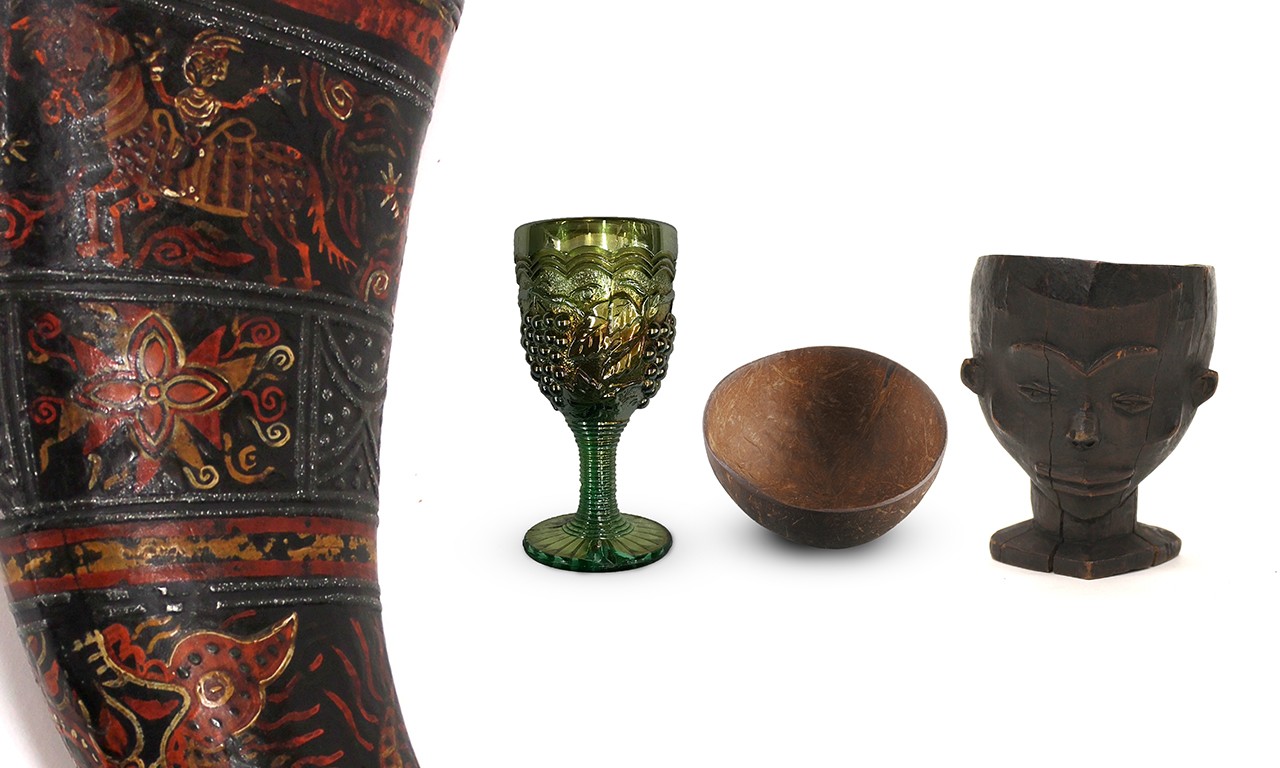 |
Group of drinking vessels from the Bowers Museum
2017.11.24, 97.50.48, 2019.7.5, and 83.32.20 |
Hindsight is 2020
No matter how you slice it, 2020 has been a year for the books. As we look back on 365 days fraught with natural disasters, a growing feeling of social unrest and a looming threat of pandemic, it is easy to only remember the bad. For many of us, though, the year has brought us closer to our loved ones. It has meant more time cuddling pets, honing hobbies whose associated gear had previously been resigned to the back of our closets, and generally learning and growing. As the year draws to a close, we celebrate in the usual ways, wondering what 2021 will bring and raising a glass to auld lang syne. Toasting with a drink in hand is hardly specific to contemporary western culture, however. In this post we look at some of the drinking vessels from cultures around the world and explore how they would have been used.
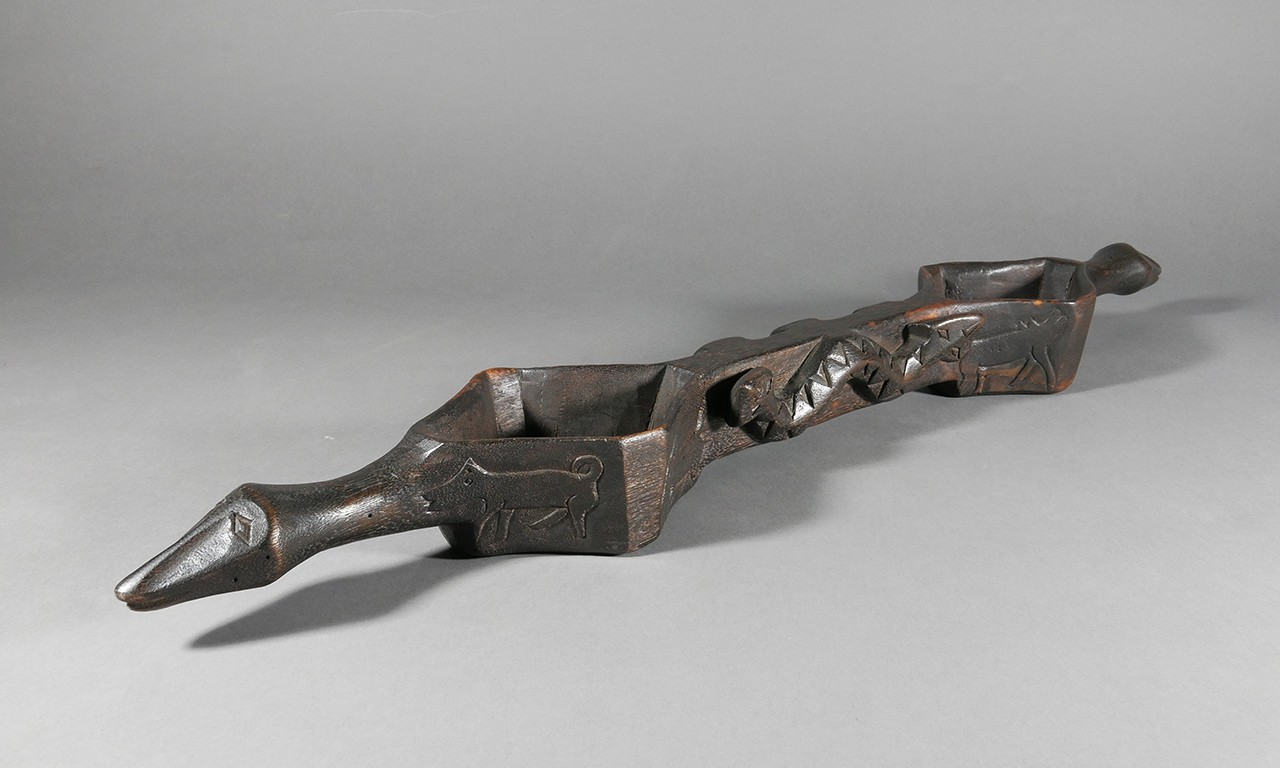 |
Twin Cup (Linnak), 20th Century
Paiwan culture; Pingtung or Taitung County, Taiwan
Wood and pigments; 27 1/2 × 4 5/16 in.
2019.15.19
Gift of Anne and Long Shung Shih |
Lined Up Drinks
This ceremonial wine cup or linnak (literally twin cup) was used by the indigenous Paiwan people of southern Taiwan. The double cup was brought out on several occasions, always to cement the relationship between the two sharing a drink from a linnak’s bowls. Perhaps the most common of these usages was sharing rice wine between newly wedded couples. Goods decorated with carvings were generally reserved for the wealthiest families. The snake, seen here decorating both handles of the cup, was an important motif in Paiwan art as it was believed that the Paiwan were descended from the viper.
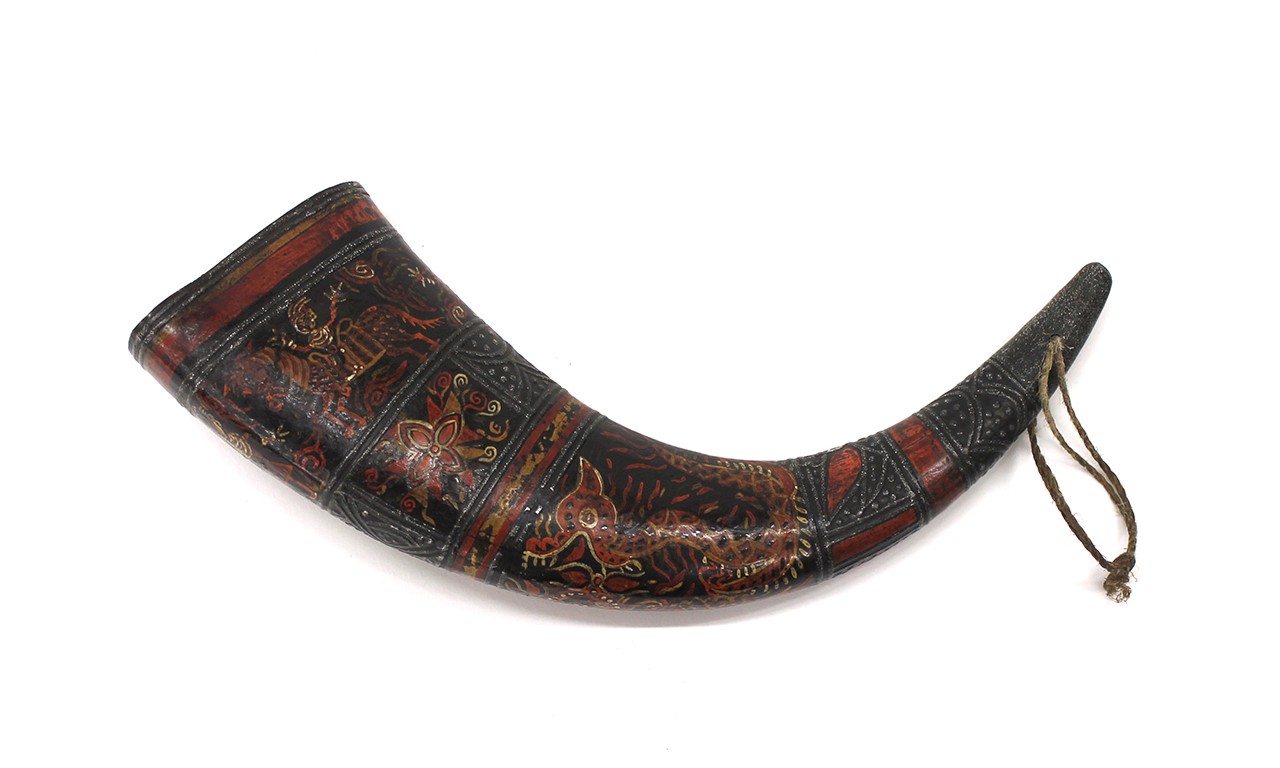 |
Drinking Horn, 20th Century
Miao or Yao culture; China
Buffalo horn, paint and fiber; 5 × 12 1/2 × 2 in.
2017.11.24
Gift of Anne and Long Shung Shih |
Hail Horns
This polychrome, lacquered horn was used as a wine horn during Miao and Yao festivals and celebrations like weddings. Common practice was for two of these horns to hang by the doorway of a host’s home. When a guest entered, both the host and the guest would each drink a horn of rice wine. These horns were most often made from water buffalo horn and then either carved or painted, but sometimes they were instead made from carved wood or silver using the traditional techniques. The designs are commonly sectioned as seen here. Plants, the dragon and the phoenix are all characteristic Miao motifs, along with scenes of Miao life seen near the mouth of the horn.
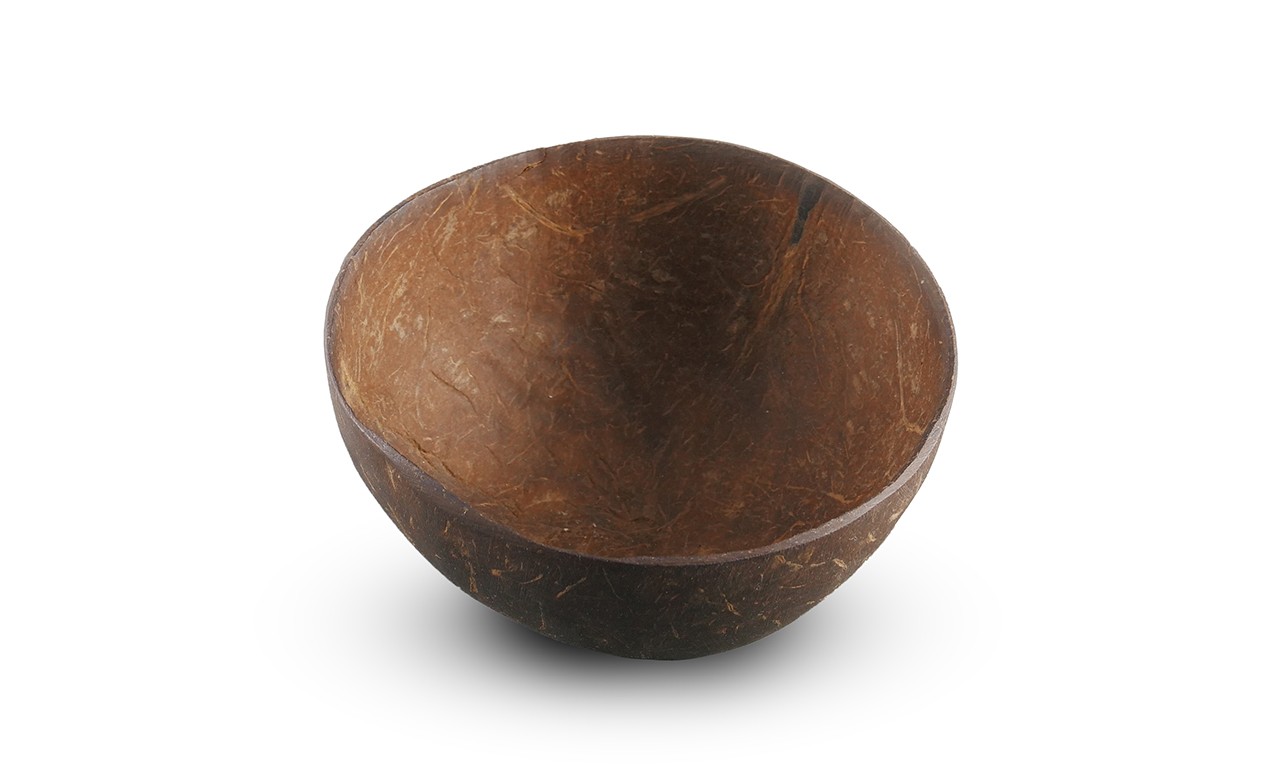 |
Kava Cup (Bilo Ni Yaqona), 20th Century
Fiji, Melanesia
Coconut Shell; 3 × 4 7/8 × 4 5/8 in.
2019.7.5
Anonymous Gift |
Pay the Bilo
This is a bilo, Fijian coconut shell cup for kava—yaqona in Fijian vernacular—a drink made from the root of the kava pepper tree which was consumed at almost every traditional Fijian feast. Various types of bowls were used for the preparation of the drink, but it was consumed almost exclusively with bilo. Generally, there would be one or two shared cups and certain high-ranking individuals such as chiefs would have their own coconut shell cups. Some cups also had either carved wooden handles, or a woven coir grip attached through holes in the rim of the cup. This cup is relatively unadorned but has all the characteristic patination of cups that saw significant use.
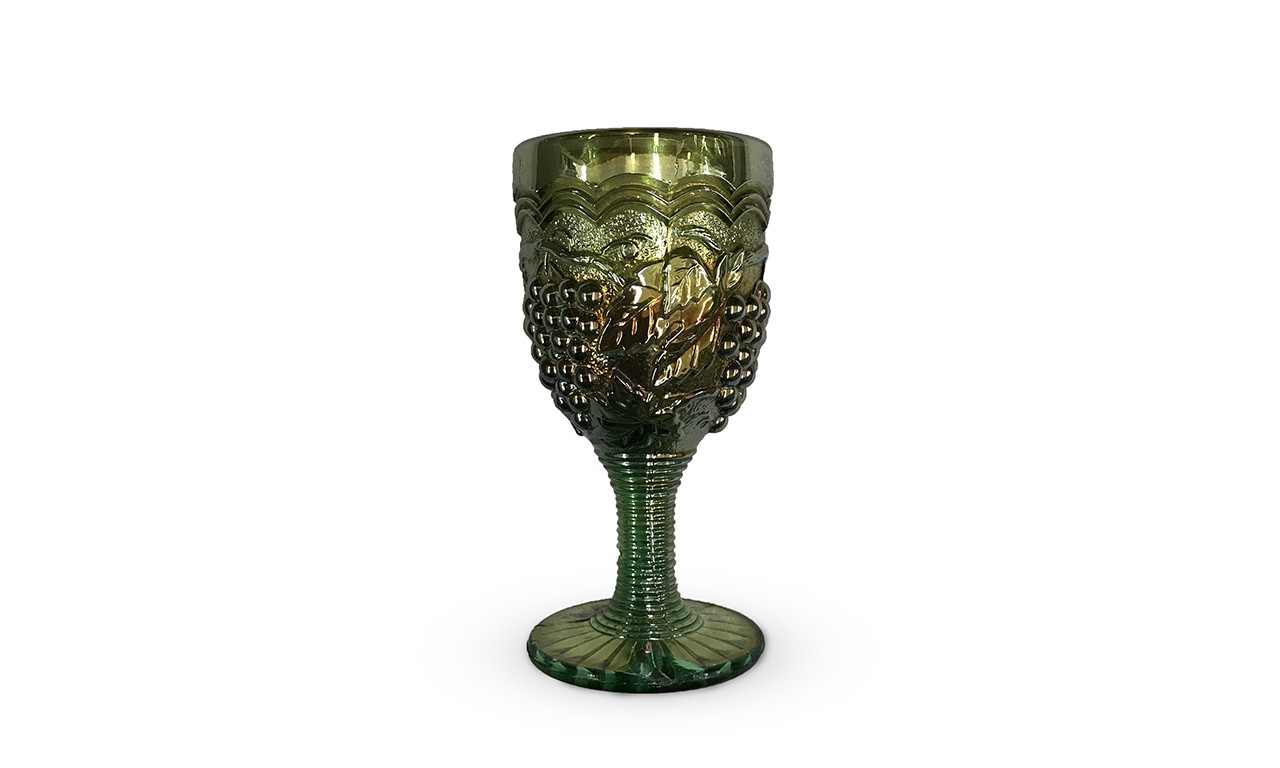 |
Wine Glass, early 20th Century
Unknown Maker; United States
Glass and metallic spray; 1 3/4 x 10 in.
97.50.48
Estate of Mable Marie Colean |
Beats a Teddy Bear
Carnival glass, originally called Iridill glass, was first invented around 1907 by the Fenton brothers of Fenton Art Glass Company of Martins Ferry, Ohio. Remarkable entirely for the iridescent shimmer, this glass came to be very popular in the United States where it is still readily found in antique shops. Though the gleaming glass is known by many names, it began to be called carnival glass around the middle of the century by collectors because the glassware was offered up as an oddity by people operating carnival games. The glassware was used for everything from vases to the wine glass seen here.
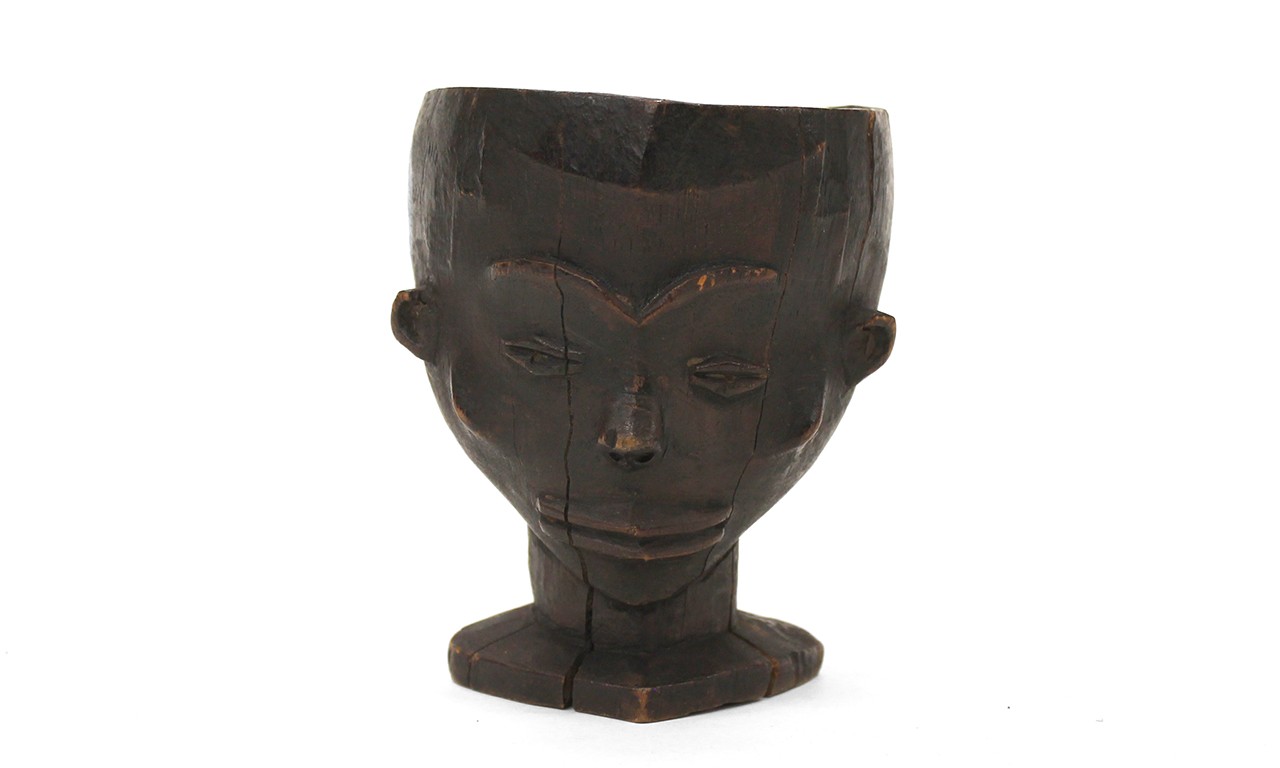 |
Head-Shaped Cup, 20th Century
Pende culture; Democratic Republic of the Congo
Wood; 5 x 3 3/4 x 3 3/4 in.
83.32.20
Gift of Dwight V. Strong |
Goes Straight to The Head
This is a head-shaped vessel made by the Pende culture of the Democratic Republic of the Congo. Much like the masks that they make, Pende elite commission vessels from carvers as status symbols. The figures can either be male or female, though all carvings bear some similar stylistic markers such as the uniquely carved eyes and the heavyset brows. These cups are generally reserved for drinking a type of white wine made from raffia palm. Drinking was a common evening activity among Pende men who would gather to discuss community happenings.
Text and images may be under copyright. Please contact Collection Department for permission to use. References are available on request. Information subject to change upon further research.







Comments 2
What a great blog for New Year’s Eve! Thank you!
A fascinating look at the cultural tradition of a drinking vessel found worldwide: the shape, material, and ritual described made my New Year's toast more interesting. Thank you for a timely and fun blog about the treasures at Bowers!